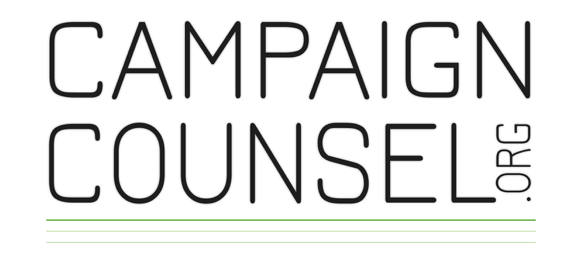Six Tips for Volunteer-Led Capital Campaigns
Can Volunteers Successfully Lead a Capital Campaign?
Volunteers can lead a successful capital campaign. Many nonprofits achieve incredible things in their communities -- including capital campaign success -- with the work of volunteers alone. The work done by these passionate volunteer boards to run programs, maintain operations, and fundraise is no small task.
We’ve had the pleasure of working with several volunteer-led nonprofits who have embarked on capital campaigns. These organizations have successfully proceeded through campaign planning studies into capital campaign fundraising, accomplishing multi-million-dollar campaign goals.
When the time comes for these volunteer-led nonprofits to consider a capital campaign, the amount of work does increase exponentially. Being prepared helps.
If you are a volunteer-led (or even one-person staff) nonprofit, these tips will help you find success in your capital campaign preparations and fundraising.
1. Keep your fire burning.
As a volunteer-led organization, it is important to preserve your energy and motivation for this capital campaign. The phrase “it is a marathon, not a sprint” applies perfectly to capital campaigns. Be sure to pace yourself (and your fellow volunteers, too!) to reduce burnout and keep moving forward at a manageable and steady rate.
Burnout can also be avoided by keeping your mission top-of-mind. It is easy to lose sight of the important work you are doing with the daily grind of campaign-related tasks. Some organizations have a “mission moment” at the beginning of each campaign board meeting. These moments aim to highlight the impact you’ve had since your last meeting or showcase a new program you have been able to implement because of the vital work you and your fellow volunteers are doing. Taking the process one day at a time while keeping your mission in mind will fuel your progress throughout the entire campaign.
2. Be meticulous about your data.
A comprehensive database to track everything about your prospects and donors, from their contact information to pledge information, is essential to your campaign’s success. If you do not currently have a database, there are countless options available that range in price and functionality. It is prudent to invest in one of these databases, particularly if you are a volunteer-led organization, so that everything is housed in one central location. Volunteer turnover is unfortunately inevitable. One central donor database can help your organization avoid losing processes and information if volunteers leave.
Within this database, each donor’s record can easily be updated with contact information, pledge reminder dates, history of thank you notes and other stewardship touches. Maintaining the integrity of your data within a database will make tracking your campaign’s progress even easier when it comes time to write grant applications, share updates with your community, and monitor your cash flow once construction begins.
3. Maintain your momentum and expect challenges.
Remember the marathon we discussed earlier? Capital campaigns should be relatively short efforts – about two to three years for projects under $5 million. That can feel like a long time when you are not being compensated for the work you are doing as a volunteer. To maintain campaign momentum, aim to make at least two to four solicitations per week. By working harder for a shorter period of time, you will reach your campaign goal faster.
Even if you have thoughtfully planned every aspect of your campaign and the construction process, challenges are inevitable. Campaigns can be like a roller coaster ride – there are a lot of thrills, but there are also disappointments and even fear. As you and your fellow volunteers encounter obstacles, be tenacious, creative and patient to find solutions, then start to build your momentum again through community engagement.
4. Continuously recruit the right volunteers.
It is no secret that most people do not enjoy fundraising. However, recruiting new volunteers to your campaign fundraising committee is one of the best ways you can maintain your momentum. New volunteers keep your campaign energized, bring new donor prospect connections to the group, and can reduce burnout.
Recruiting the right volunteers is important. You’ll want to invite people to join your committee who have already donated to the project themselves. Ideally, these people are also well-connected in the community or can help fill a certain skillset that you need, like marketing or grant-writing. Building your committee throughout your campaign is another way your volunteer-led organization can accomplish your campaign goal.
5. Explore paid resources.
Even if you are a volunteer-led organization, many small nonprofits often have enough of a budget to support the cost of a consultant to lead feasibility studies and manage campaigns. If you anticipate that one volunteer may end up carrying the majority of the campaign burden, consider hiring a consultant. This person will essentially serve as a short-term development staff member who will guide your strategy, write grants, and keep your campaign on track.
6. Remember these tried-and-true fundraising tenets.
If you are starting to feel hopeless about your progress, there are three facts about fundraising that are core to your progress. The first is that people give to people. The personal relationships you are building with your prospects and your donors are key to their decision to support your nonprofit. Do not rush the process here – take time to cultivate these relationships so you can make a thoughtful and personable ask.
This leads to the second fact: People give because they are asked. People rarely make large donations without a personal solicitation. You don’t want to rely on meeting your campaign goal through online and direct mail solicitations. Instead, take the time for a one-on-one meeting with your larger capacity prospects. During the meeting, show them your campaign video, your brochure, and make a thoughtful ask.
The third fact: People respond best to specific requests. When you make the thoughtful ask as described, be sure to include a specific gift amount. If asking for a specific amount makes you feel uncomfortable, ask for a gift within a range you’ve identified as appropriate for the prospect. If possible, research your donor prior to the meeting to learn what other organizations they support and at what level. Then, base your ask around this past giving behavior. If you choose to ask in a range, such as “the Gold Level between $25,000 - $49,999,” this allows the donor to select what they are comfortable with for their support.
Keeping these three facts central to your fundraising process will help your volunteer-led capital campaign be successful.
Volunteer-Led Capital Campaigns are Possible
Planning for and executing a capital campaign without any paid staff is possible. Keeping these recommendations in mind will help you maintain your momentum with a mission-centric focus, recruit new volunteers who have the skills and connections you need, and focus on the three fundraising tenets that should be central to your solicitations.
If your volunteer-led organization is considering a capital campaign but you aren’t sure if you are ready to embark on this journey, contact us today to schedule a free workshop. You can also download our free campaign planning resources like a budget template/cash flow formula, a gift chart builder, or a capital campaign consultant RFP template.
If this was helpful, you might like to read Professional Asks Impact Capital Campaign Solicitation Success. Solicitations
Kevin Wallace is president of CampaignCounsel.org.







